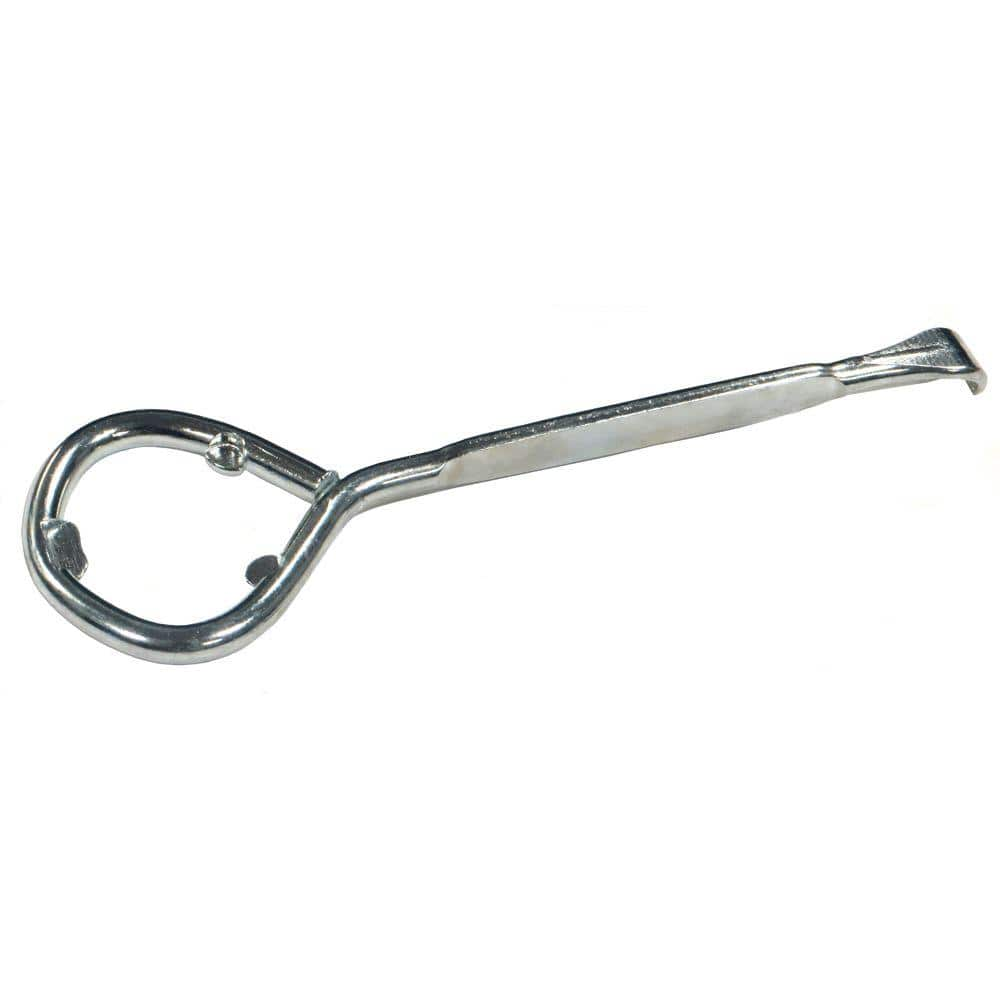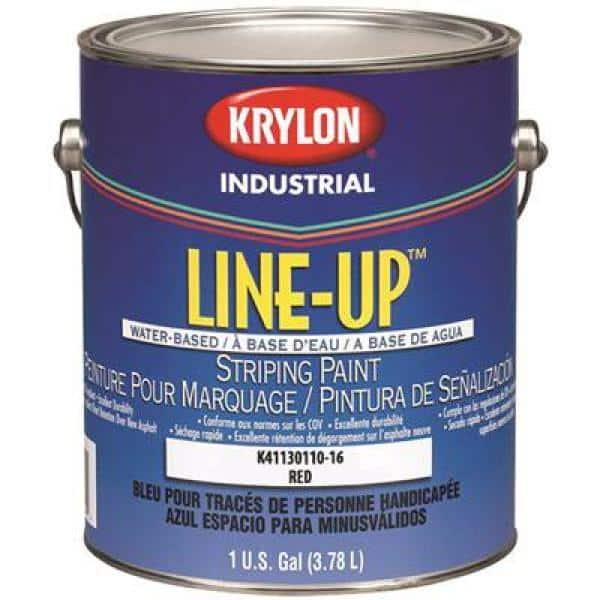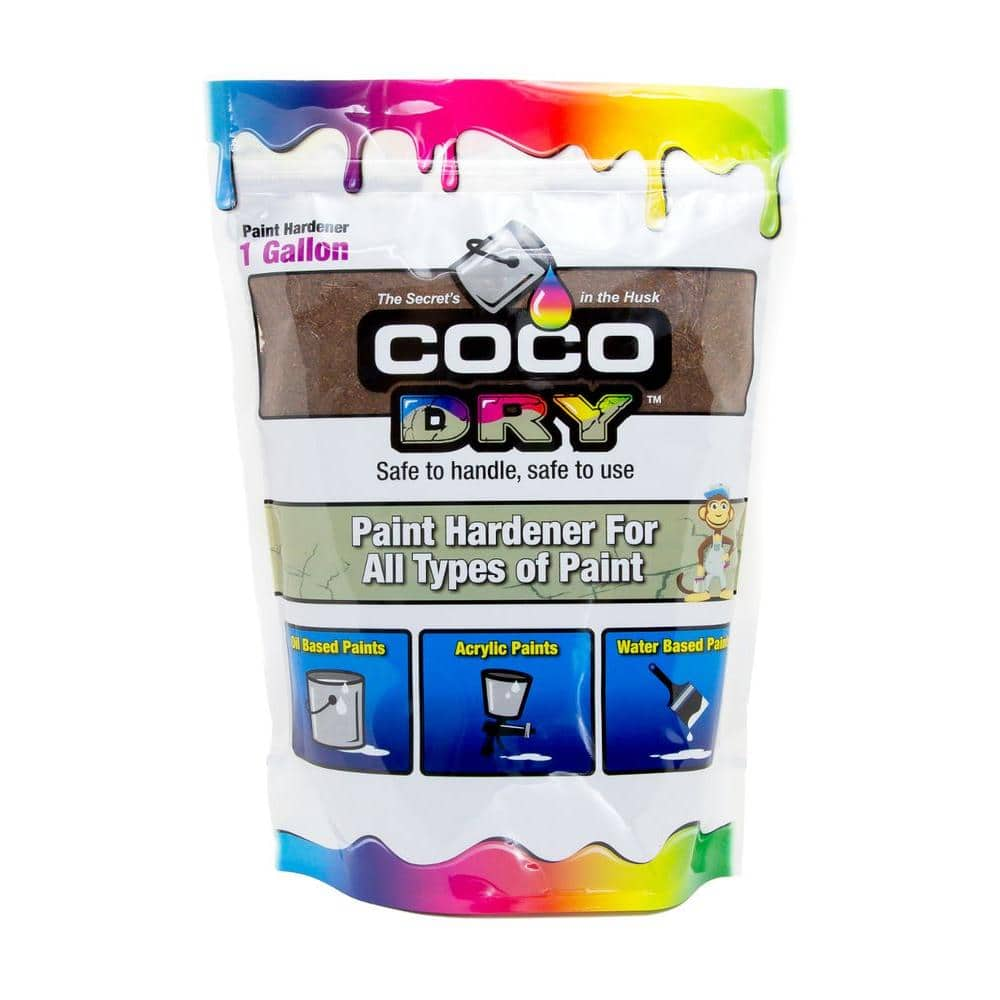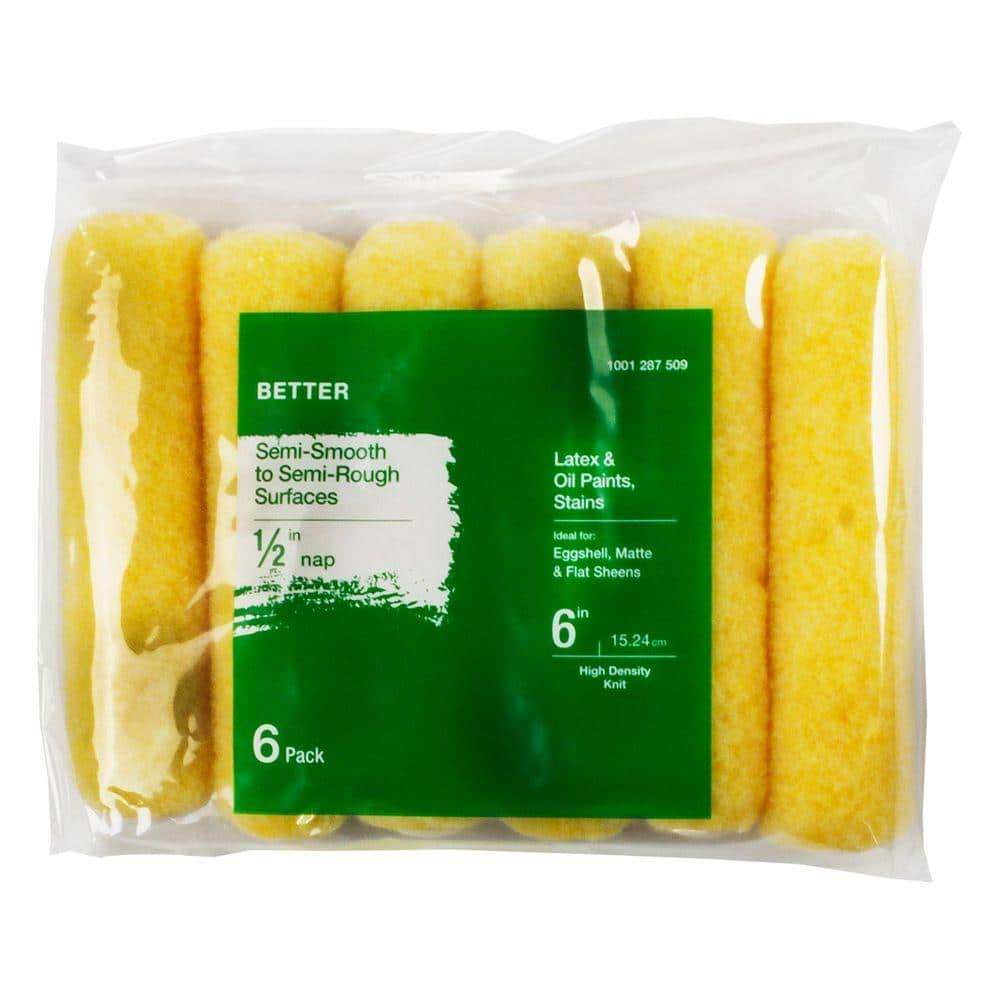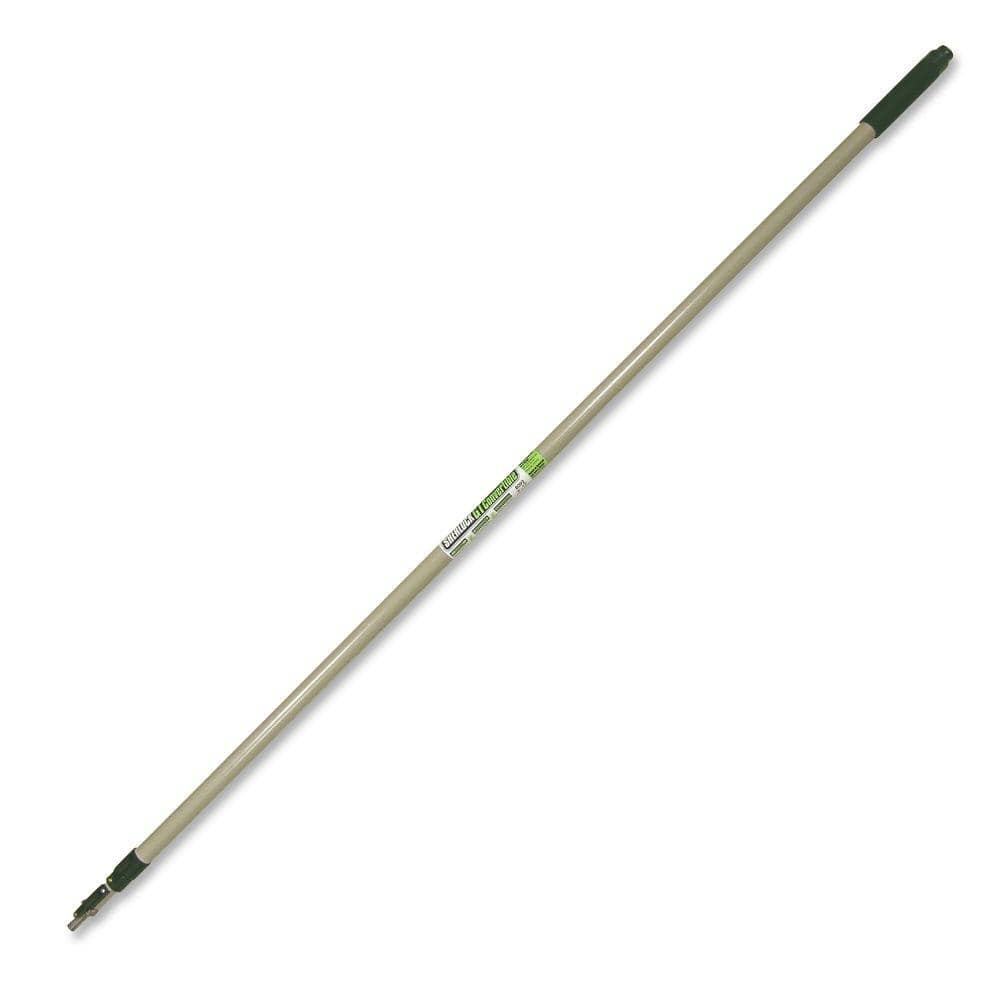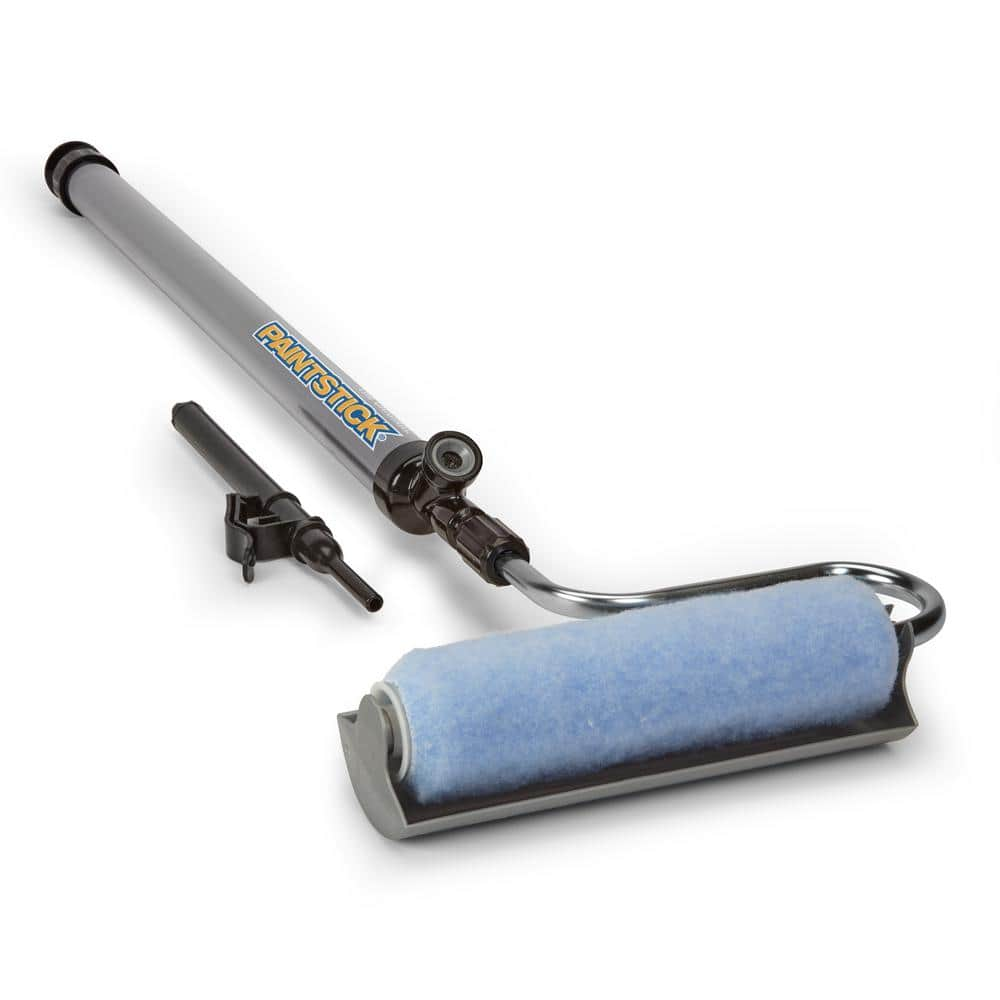Best Paint Rollers For Your Projects

Last updated February 17, 2025
Paint rollers are ideal for interior and exterior DIY painting jobs due to their ease, versatility and speed of application. Compared to paint brushes, the different types of paint rollers used provide smoother finishes and reduce splatter. The best paint rollers can be particularly effective on walls and other large, flat surfaces as varied as drywall, stucco and concrete. This buying guide reviews the best paint rollers for your projects and compares the differences in paint roller sizes, thickness and materials.
Table of Contents
How to Choose a Paint Roller Cover
Paint Roller Cover Materials
Paint Roller Sizes
Paint Roller Cover Thickness
How to Choose a Paint Roller Cover

Paint rollers have two basic parts, the frame and the roller. A paint roller cover slides onto a paint roller frame and can be replaced when needed. Choose your roller cover based on the type of paint you'll be using and the roller nap. The nap is what creates the paint texture on the surface you are painting. Kits are available that contain both a paint roller frame and covers.
Paint Roller Cover Materials

Paint roller cover materials vary from natural fibers to polyester fibers and foam.
- Natural fiber roller covers made of materials such as lamb’s wool or mohair are ideal for oil-based paints and painting on any surface texture.
- Polyester covers made of materials such as nylon resist matting, making them effective with water-based latex paints and suitable for any surface texture.
- Foam roller covers work well with oil or high-gloss latex paints, particularly on porous surfaces such as bare wood. They may not last as long as other types of rollers.
- Roller covers made of versatile blends such as natural wool and polyester are effective for multiple uses and different kinds of paint.
Paint Roller Sizes

Paint roller frames consist primarily of a comfortable handle and a rotating cage roller over which fits the cover. They are available in multiple sizes than can range from as small as two inches to as wide as 18.
- Standard wall rollers are 7 to 12 inches wide, with 9-inch rollers being suitable for most home projects.
- Smaller rollers of 6 to 7 inches are suitable for small furnishings or baseboard moulding.
- Mini rollers and mini roller covers of less than 5 inches can be the best paint rollers for small surfaces and narrow areas such as edges, corners, trim and frames, as well as hard-to-reach places such as inside bookcases and cabinets.
Paint roller frame extensions are helpful accessories when painting ceilings and high areas of walls.
Paint Roller Cover Thickness

The thickness of roller covers is called the nap or pile. A rule of thumb to follow is that the rougher the painting surface, the thicker the nap you should use. Roller covers are typically available in thicknesses of 3/16 to 1/4-inch, 3/8 to 1/2-inch, 3/4 to 1-inch and 1 1/4 to 1 1/2-inch, each designed for a different purpose.
3/16 to 1/4-inch thickness is perfect for smooth surface roller covers for painting metal doors, interior doors, trim and cabinets. They work well with semi-gloss or gloss coatings and both oil- and water-base enamels.
3/8 to 1/2-inch thickness is preferable for semi-smooth surfaces such as drywall. It can be used on painted or unpainted walls and ceilings.
3/4 to 1-inch thickness is suitable for stucco and other semi-rough surfaces.
1 1/4 to 1 1/2-inch is ideal for rough surface roller covers for painting brick and masonry, cinder blocks or chain link fences.
To determine the best paint rollers for your needs, consider the size, shape and roughness of the surface to be painted. Compared to paint brushes, rollers can provide a coat of paint with a particularly smooth finish whether using a natural or synthetic fabric cover.
Need help identifying paint supplies? Find products fast with image search in The Home Mobile Depot App. Snap a picture of an item you like, and we'll show you similar products.



